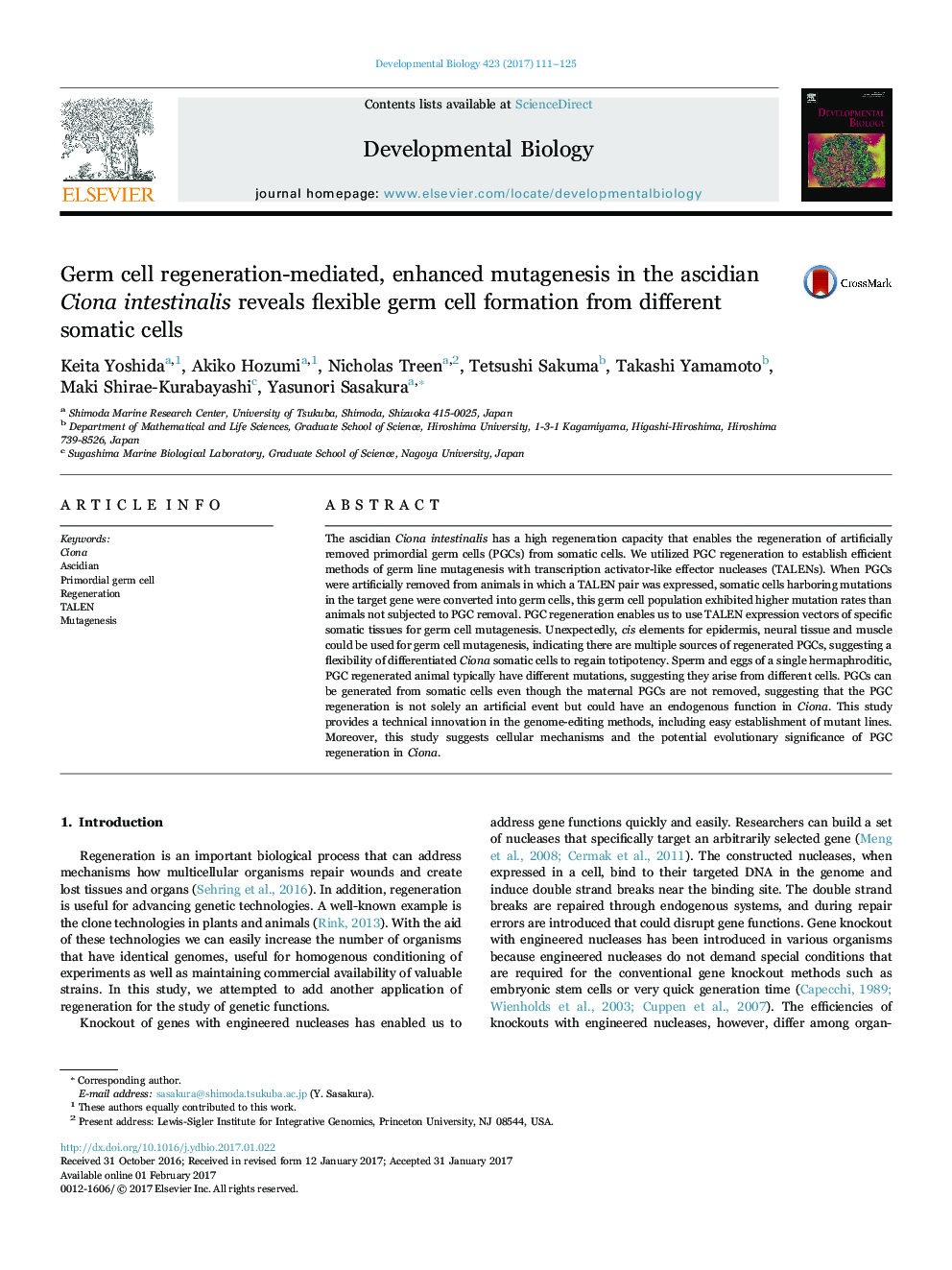| Article ID | Journal | Published Year | Pages | File Type |
|---|---|---|---|---|
| 5531968 | Developmental Biology | 2017 | 15 Pages |
â¢An efficient way of germ cell mutagenesis in Ciona was developed using PGC regeneration.â¢Germ cells can be mutated by tissue-specific expression vectors.â¢PGCs are regenerated from several somatic tissues.â¢Sperm and eggs are likely to regenerate from different cells.â¢PGC regeneration also occurs without PGC removal.
The ascidian Ciona intestinalis has a high regeneration capacity that enables the regeneration of artificially removed primordial germ cells (PGCs) from somatic cells. We utilized PGC regeneration to establish efficient methods of germ line mutagenesis with transcription activator-like effector nucleases (TALENs). When PGCs were artificially removed from animals in which a TALEN pair was expressed, somatic cells harboring mutations in the target gene were converted into germ cells, this germ cell population exhibited higher mutation rates than animals not subjected to PGC removal. PGC regeneration enables us to use TALEN expression vectors of specific somatic tissues for germ cell mutagenesis. Unexpectedly, cis elements for epidermis, neural tissue and muscle could be used for germ cell mutagenesis, indicating there are multiple sources of regenerated PGCs, suggesting a flexibility of differentiated Ciona somatic cells to regain totipotency. Sperm and eggs of a single hermaphroditic, PGC regenerated animal typically have different mutations, suggesting they arise from different cells. PGCs can be generated from somatic cells even though the maternal PGCs are not removed, suggesting that the PGC regeneration is not solely an artificial event but could have an endogenous function in Ciona. This study provides a technical innovation in the genome-editing methods, including easy establishment of mutant lines. Moreover, this study suggests cellular mechanisms and the potential evolutionary significance of PGC regeneration in Ciona.
